SATORU ISAKA
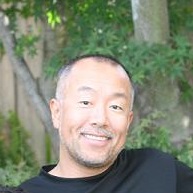
>>>Nihongo
SATORU ISAKA is a systems scientist. He received his Ph.D. in Systems Science from the University of California, San Diego in 1989. His research topic was on adaptive control systems theory and artificial intelligence. From 1990 to 1998, he was a Research Scientist at OMRON in factory automation. From 1998 to 2004, he worked with a series of venture startups as the Chief Technology Officer and the Chief Scientist in customer service automation, natural language processing, and speech interaction. In 2004, he founded Vision Del Mar, LLC., to focus on research in the field of public health and machine learning. His current research interests include embedded networked control systems and their developmental behavior.
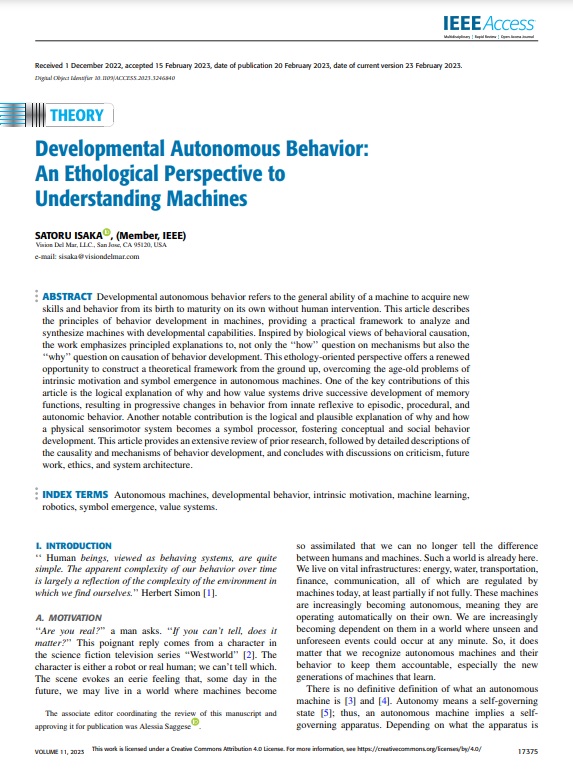
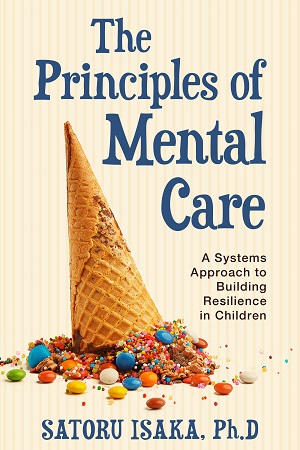
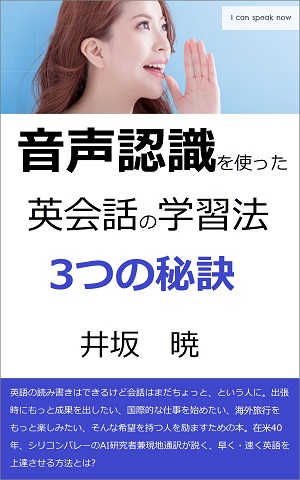
Current Thoughts
Selected quotes
"Future is an imaginary trail that leads to a new past"
"Life is a willow in winds of fate"
"I'd rather regret what I did than what I didn't do"
"The best education I received was from spending time with children. When I was coaching them, I was actually their student"
Backstory
Growing up in a suburb of Tokyo in the 1960’s and 70’s, Satoru loved hanging out with friends, playing baseball and tinkering with electronics. In middle school, he roamed around Akihabara, the famed wholesaler town of electronics, to pick up transistors and components, made his own custom circuit boards and built random electromechanical stuff on weekends. Boys like him were nicknamed the Radio Boys back in those days. In high school, he spent most of his time training in Kendo. Upon high school graduation in 1978, he left Japan to attend college in the USA.
He originally intended to go to Ohio State University (OSU) because he watched the Buckeyes football games on TV. But being a teenager, with poor attention and lack of English skills, he ended up at a different OSU, Oklahoma State University. He was confused but it was a blessing in disguise. He spent three wonderful years in Stillwater, Oklahoma, soaking up the Midwest culture, enjoyed hanging out with friendly people of good old America.
In the summer of 1980, he took a 1,500-mile road trip to Southern California. Struck by the gorgeous view of the Pacific Ocean from La Jolla Shores Drive, he decided to transfer there, even though he did not know which college or even the name of it. It turned out it was the University of California, San Diego (UCSD), a great academic institution. In the summer of 1981, he packed his stuff and moved to Pacific Beach, soaking up the sunny lifestyle of Southern California.
In his senior year at UCSD, he built a robotic guitar self-tuner. With a microphone, 8-bit microprocessor M6800, and a torque motor, the robot automatically rotates the guitar peg to tune the string frequency. With generous support and advice from the professors at UCSD, he stayed on to graduate school to advance his study on control systems theory and artificial intelligence. He worked on various research projects, including stroke rehabilitation monitoring, digital seismography, drug infusion systems, and H-infinity algorithms. During his years as a graduate student, he lived in a small beach town of Del Mar, just north of the campus. He brewed his own beer and created his private label, Del Mar Brewery. He completed his Ph.D. in 1989 with his work on adaptive control strategies with artificial intelligence.
In 1990, he got a job offer in Cupertino, California, and began his fast-paced lifestyle in the heart of Silicon Valley. Over the next few decades, he absorbed and executed everything about business and entrepreneurship: research and product development, project management, intellectual property management, product marketing and sales, new business development, media training and public relations, PL-BS-cashflow management, fund-raisning, and investment.
From 1995 to 1997, he and his wife lived on a 35-ft sailboat in South San Francisco, and saved as much money as they could for travel. In October 1997, they took off for a year-long journey with just a backpack, trekking Central and South America, and East and SouthEast Asia. Upon returning in late 1998, he picked up a few venture startup opportunities, riding the wave of then-emerging Internet and mobile computing.
After a while in the business world, his view on technology changed. He decided to devote his skills and time to making things that are meaningful. He prioritized time with his three children and became an active youth sports coach in baseball, softball, and soccer. He gained first-hand experience in children's social-emotional well-being, the most influential experience of his life.
Today, he is applying his experience and observation in human growth and behavior development, artificial intelligence, and systems science to his theoretical framework of developmental autonomous machines, solving the age-old problems of intrinsic motivation and symbol emergence in autonomous machines.
Another backstory: My guitar S. Yairi and Brother Yuichi
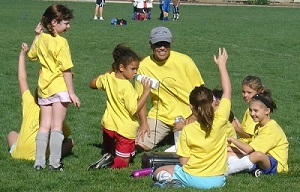
Selected creations
- In 1998, he built “Q”, a conversational search engine interface for accessing actionable information via natural language. By simply typing or speaking to “Q”, people would get up-to-date information about local weather, news, stock prices, movie showtimes, and various others. This type of service became commonly available 10 years later.
- In 2002, he designed and patented an online information processing system for analyzing customer big data from phone, text, email, and websites to improve customer service quality. With increased interests in Big Data, this type of functions became important 10 years later.
- In 2003, he built a voice and mobile decision tree system as a health self-service to solve health literacy and accessibility problems. The system was designed to deliver complex medical information in simple language anywhere, anytime by using telephone or mobile internet. He founded a non-profit public charity organization iTriage.org to deliver free services to Spanish and English speakers by using the system.
- In 2006, he built a conceptual model of developmental autonomous behavior. He continues to work on the subject. More information at Developmental Autonomous Machines - a system of embodied adaptation and prospection.
- In 2015, he developed a method and system to promote preventive emotional health for young children. He's spent years studying and analyzing emotions and behavior, and developed a new way to approach mental wellbeing by applying systems science principles. He built a mobile app, toys, and published a book. More information at The Principles of Mental Care.
- In 2017, he built a system and service for English learners to practice pronunciation by using speech recognition and natural language dialog. More information at ESL by Speech Recognition.
- In 2018, he built voice decision trees for Amazon Alexa. The original idea is from his work in 2003. With the rapid advancement of voice interface devices like Amazon Echo, his idea is more relevant and practical for general public than 15 years ago. More information at Decision via Voice.
- In 2023, he published a peer-reviewed article at an IEEE open access journal on Developmental Autonomous Behavior for Machines. More information at IEEE paper.
Selected Publications
- S. Isaka, “Behavior-Based Robotics, Cyber-Physical Systems, and Machine Learning: United as a Practical Pathway Toward Machine Autonomy,” Proc. IEEE International Conference on Systems, Man, and Cybernetics (SMC), Kuching, Malaysia, 2024, Submitted for publication.
- S. Isaka, “Autonomy in Cognitive Development of Robots: Embracing Emergent and Predefined Knowledge and Behavior,” Proc. IEEE 20th International Conference on Automation Science and Engineering (CASE), Bari, Italy, 2024, Submitted for publication.
- S. Isaka, “An Ethological Analysis of Developmental Behavior in Machines," 2023 IEEE International Conference on Development and Learning (ICDL), Macau, China, pp. 79-86, 2023.
- S. Isaka, "Developmental Autonomous Behavior: An Ethological Perspective to Understanding Machines," in IEEE Access, vol. 11, pp. 17375-17423, 2023, doi: 10.1109/ACCESS.2023.3246840.
- S. Isaka, The Principles of Mental Care, Independent Publishing, 2018.
- S. Isaka, Practical English Training with Speech Recognition, Independent Publishing, 2018.
- S. Isaka and H.T. Nguyen. “Information triage for health literacy promotion”, Abstract for the 133rd Annual Meeting & Exposition, American Public Health Association, Philadelphia, PA, 2005.
- S. Isaka, "An empirical study on facial image feature extraction using genetic programming", Late Breaking Papers at the Genetic Programming 1997 Conference, Stanford University, pp.93-99, 1997.
- S. Isaka and V. Chu, "Industrial fuzzy control review: a perspective from feedback and manufacturing", Industrial applications of fuzzy logic, World Scientific Publishing, 1995.
- S. Isaka, "Fuzzy logic applications at OMRON", Industrial Fuzzy Control and Intelligent Systems, IEEE Press, 1995.
- B. Kosko and S. Isaka, "Fuzzy Logic", Scientific American, Vol.269, No.1, pp.76-81, July 1993.
- S. Isaka and A.V. Sebald, "Control strategies for arterial blood pressure regulation", IEEE Trans. on Biomedical Engineering, pp.353-363, Vol.40, No. 4, April 1993.
- S. Isaka, "Fuzzy temperature controller and its applications", Proc. SPIE Applications of Fuzzy Logic Technology, pp.59-65, September 1993.
- Z.Y. Zhao, M. Tomizuka, and S. Isaka, "Fuzzy gain scheduling of PID controllers", IEEE Trans. on Systems, Man, and Cybernetics, Vol.23, No.5, pp.1392-1398, September 1993.
- K. Mitsubuchi, S. Isaka, and Z.Y. Zhao, "A fuzzy rule generation", Proc. IFSA World Congress '93 Seoul, Korea, pp. 11-14, 1993.
- S. Isaka, "On neural approximation of fuzzy systems", Proc. IJCNN '92 Baltimore, pp. 263-268, 1992.
- S. Isaka, "On function approximations by fuzzy and neural systems", Proc. Int'l Symposium on AI in Material Processing, Edmonton, Alberta, 1992. (invited paper)
- S. Isaka, "On input space clustering by fuzzy systems and neural networks", Proc. IEEE Int'l Conf. on Systems, Man, and Cybernetics, Chicago, 1992. (invited paper)
- Z.Y. Zhao, M. Tomizuka, and S. Isaka, "Fuzzy gain scheduling of PID controllers", Proc. The First IEEE Conf. on Control Applications, Dayton, pp. 698-703, 1992.
- S. Isaka and A.V. Sebald, "An optimization approach for fuzzy controller design," Proc. American Control Conference, pp.1485-1490, 1990.
- S. Isaka, "On the design and architecture of adaptive fuzzy controllers and their application to a biomedical control problem," Ph.D. Thesis, University of California, San Diego, 1989.
- S. Isaka and A.V. Sebald, "An adaptive fuzzy controller for blood pressure regulation," Proc. IEEE Eleventh Annual EMBS Conf., 1989.
- A.V. Sebald, M. Quinn, N.T. Smith, A. Karimi, G. Schnurer, and S. Isaka, "Engineering implications of closed-loop control during cardiac surgery," Journal of Clinical Monitoring, 1989.
- A. Karimi, A.V. Sebald, and S. Isaka, "Use of Simulated Annealing in Design of Very High Dimensioned Minimax Adaptive Controllers," Proc. 23rd. Asilomar Conf. on Signals, Systems and Computers, 1989.
- S. Isaka, A.V. Sebald, A. Karimi, N.T. Smith, and M.L. Quinn, "On the design and performance evaluation of adaptive fuzzy controllers," Proc. IEEE 27th Conf. Decision and Control, pp.1068-1069, 1988.
- S. Isaka, A.V. Sebald, N.T. Smith, and M. Quinn, "A fuzzy blood pressure controller," Proc. IEEE Tenth Annual EMBS Conf., pp.1410-1411, 1988.
- S. Isaka, A.M. Schneider, P. Filia, K.K. Lue, R.D. Coutts, and V.L. Nickel, "A new tool for stroke rehabilitation study," Proc. 10th Annual Conf. on Rehabilitation Technology, pp.287-289, 1987.
Links
Contact
©2004-2024 Vision Del Mar, LLC
|




